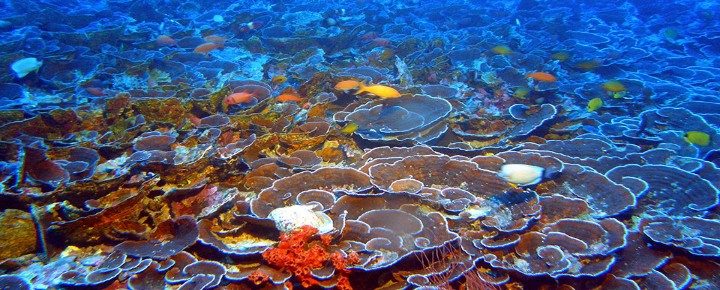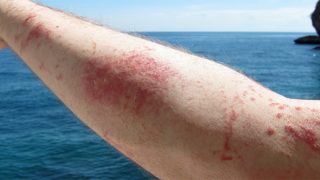A report from the University of Hawaii offers an encouraging glimpse at precious Hawaii coral reefs with insights not previously available. These are some of the most diverse ecosystems on earth, and feature coral and aquatic life found nowhere else. A study at the university’s Institute of Marine Biology looked at how the reefs evolve in symbiosis with algae living on and near them, together with various microbes. Fascinating.
In evaluating coral bleaching, researchers at UH were surprised to find that Hawaii coral reefs “have adapted and diverged very recently over depth and distance from shore… It’s like we caught them in the act of adaptation and speciation.”
The study’s report comes as coral reefs are in a state of rapid collapse globally and amidst worry that coral cannot adapt to changing climate. UH researchers used “massive amounts of metagenomic sequencing data” to evaluate what causes variation and adaptation in coral reefs.
According to Zac Forsman, the lead author of the study. “Some corals lose their algal symbionts, turning stark white or ‘bleached’ and die during marine heatwaves, while a similar-looking coral right next to it seems fine. We wanted to try to better understand what might be driving some of this incredible variation that you see on a typical coral reef. We sought out to better understand coral bleaching.”
Learning about how corals have and continue to diversify will help researchers see how they may adapt in the future. The hope is that these corals can adapt to future conditions, assuming the rate of coral loss can be slowed.
New Hawaii sunscreen law started in January.
Hawaii now bans all sunscreens that can damage Hawaii coral reefs starting in January. The new law prevents the sale of sunscreens containing oxybenzone and octinoxate. These chemicals are found in literally thousands of sunscreens.
What you can do to help Hawaiian coral.
1. Use physical barrier type sunscreens. They are better for you and for the environment.
2. Don’t buy coral jewelry. The iconic jeweler Tiffany agrees that old red coral should not be harvested or worn.
3. Eat sustainably harvested seafood. Help ensure that fish stocks are maintained and over-fishing is avoided.
4. Don’t touch, remove, or disturb marine life in Hawaii.
5. Do not touch or step on coral, and avoid stirring up sediment near coral.
6. Learn more about coral and read about NOAA’s Coral Reef Conservation Program Also read about the Coral Reef Alliance.
Photo credit NOAA.







I was pleased to see that the new coral from a year ago at Anini is still looking healthy. The further out you go, the better it looks!
Thanks for this important posting! My eyes were opened to the acceleration of bleaching and degradation of corals by an early morning conversation with a local fisherman 6 years ago visiting San Pedro, Belize.
Wear rash guards.
Wear flotation devices.
Do not step on corals.
Chose your outfitter wisely.
Aloha Guys
That’s some very good news.